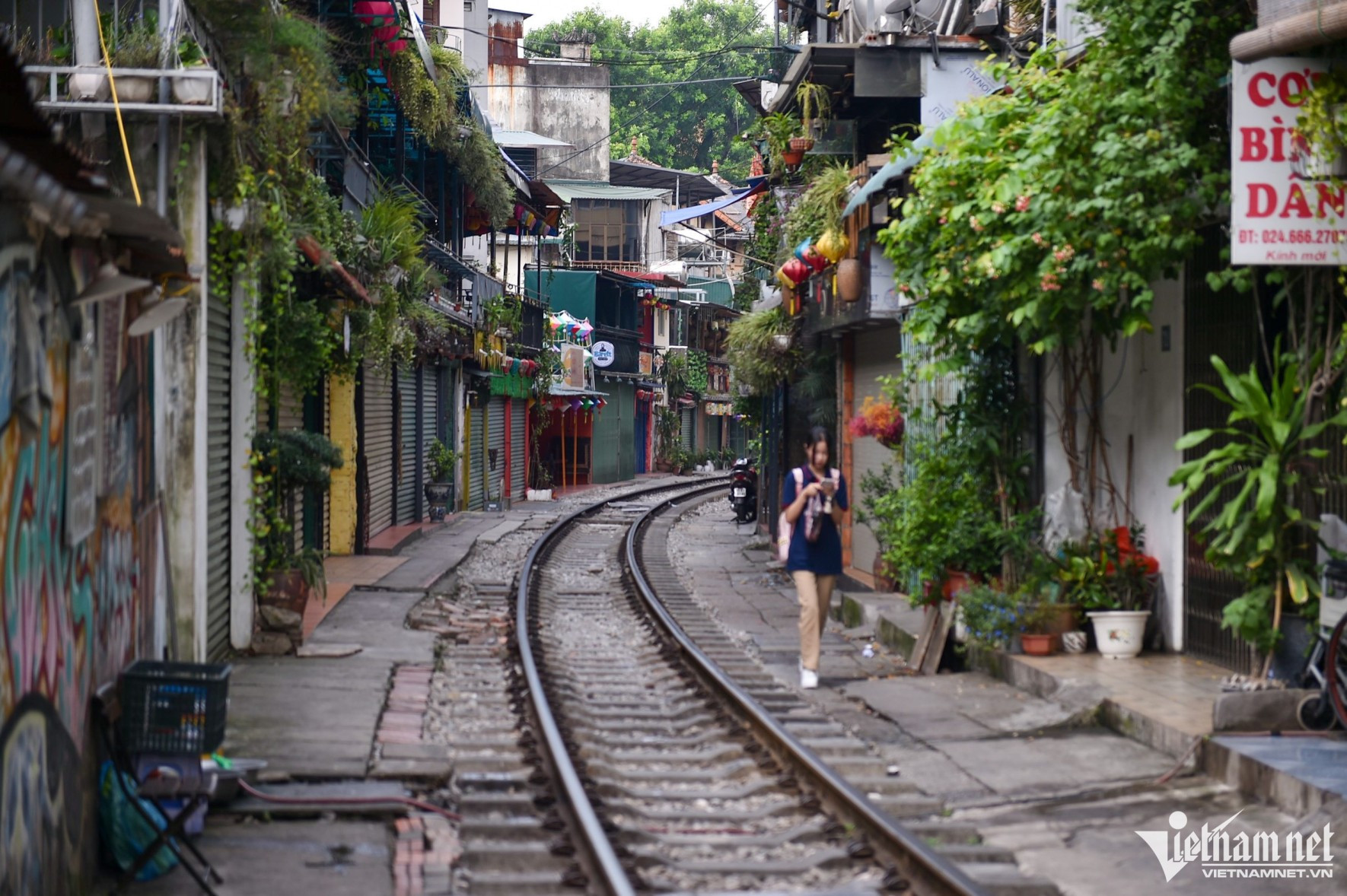
The residents of the railway café street have for the third time filed a petition to the central agencies, Hanoi People’s Committee and Hoan Kiem district, complaining about the difficulties in earning a living after their cafes were forced to shut down.
The people from Tran Phu street to Phung Hung street in Cua Dong and Hang Bong wards in Hoan Kiem district in Hanoi have asked local authorities to find solutions to support people so that the railway cafes don’t have to shut down, while railway safety is ensured.
In the petition, the residents wrote that they understand the dangers of living next to the railway, including the lack of safety when trains pass by, dust pollution, and exhaust from trains. But life goes on and they still have to continue living there.
Recalling the first days when the railway café street took shape, the residents said at first they felt uncomfortable as tourists sat right at their door. They sat for a very long time under the sun and rain, just with the hope of seeing trains pass by.
Later, some people at houses with large verandas, gave chairs and fans to travelers and offered water for free. They also invited the travelers to sit indoors to avoid sun and rain. Some people who could speak English began talking with the travelers while they were waiting for the trains.
Then the railway café street in Hoan Kiem district began taking shape. In early 2022, the street received more visitors.
After photos of the railway café street appeared in National Geographic, the life of locals became better.
They want to continue earning their living with the original cafes. In the petition, they pledged to ensure safety for travelers if the railway café street is allowed to reopen. Leaflets on safety measures in Vietnamese, English and French would be delivered, while travelers would be asked to read the leaflets carefully and commit to the measures before entering the railway café street.
The Vietnam Railway Corporation (VRC) can apply technical solutions to ensure safety, such as reducing train speed, giving early warning with bell and signal lights, and setting barriers up early before trains enter the railway café area.
Railway café street residents said traffic experts have suggested measures to ensure traffic safety and develop tourism. For example, drawing lines to set safety boundaries; installing warning signs in dangerous areas to show levels of danger; installing warning bells at cafes; and only opening cafes at certain times.
They hope that Cua Dong and Hang Bong authorities will arrange night watchmen in charge of reminding travelers to follow safety measures when entering the railway café street.
“If such measures are applied by the local authorities, we pledge to strictly implement all the regulations set forth,” the petition said.
Earlier, VRC had sent a document to the Hanoi People’s Committee and the Vietnam Railway Authority (VRA), asking to stop trade and photo-taking at railway cafes threatening railway traffic order and safety.
After receiving the document, Hoan Kiem district leaders said all the households doing business in the railway area are infringing on the railway safety corridor. They stated that local authorities will revoke all business registration licenses granted before to the cafes.
Agencies of Hoan Kiem district have erected barriers to block the railway café street, while authorities at different levels have persuaded travelers and people not to gather in crowds in the railway café area.
Nguyen Xuan Tan, former deputy director of the Hanoi Transport Department, said that people’s lives and properties are extremely important, but they have to observe the regulations to ensure traffic safety.
“We need to support the view of Hoan Kiem district that the railway café street needs to be cleared and done as soon as possible,” Tan said.
Tan said this not only threatens the lives of individuals at the site, but also hundreds of passengers in the trains.
Quang Phong